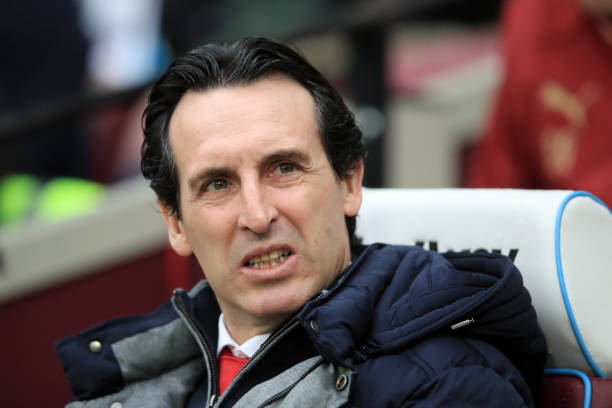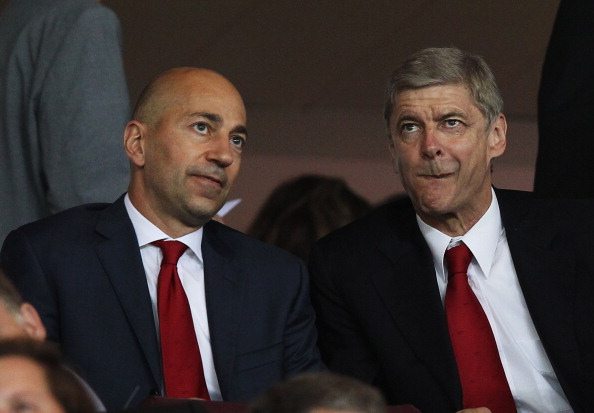Despite being one the best run clubs in the country for the majority of the last century, under the watch of Ivan Gazidis, Arsenal seriously dropped the ball at exactly the wrong time.
The rules

Having written at length about the state of the Arsenal first team squad and the commensurate need for investment, I’ve seen and heard a lot of comment about how the Liverpool game and the rush for fourth may encourage Stan Kroenke to spend some of the Wall-Mart billions.
Unfortunately, I’m here to give everyone a reality check. And not just the obvious one about Silent Stan’s reluctance to spend. The fact is, even if KSE wanted to go full Abramovich or Sheikh Mansour, it simply isn’t possible, due to regulations that govern football clubs in the Premier League.
Apologies to readers who know this, but most Arsenal fans, and indeed football fans as a whole, don’t.
You see, while Uefa’s FFP has shown itself as toothless and corruptible as you’d expect given the nature of that governing body, the Premier League’s version, Short Term Cost Controls (STCC), has shown itself to have a little more teeth, although typically in ways that benefit some parties more than others.
Perhaps intended to work in tandem with UEFA’s model that deals with overall spending vs income, the EPL version is rather more specific. The Premier League recognised that it was wage inflation rather than transfer fee inflation that was posing the greater risk to the stability of football clubs – just ask Leeds United, Q.P.R and Sunderland fans. The recently implemented regulations (which into effect in 2016/17) seek to stop these spiralling out of control, particularly against the backdrop of TV money accelerating the increase in player wages. These regulations were also influenced by the consistent proof that at all but the obscene levels of transfer expenditure, it is the amounts of money spent on wages rather than on initial signings that has the greater correlation with league position.
Accordingly, rules were introduced to put a cap on increases in wage expenditure, in a manner that attempted to be fair across the board.
This was laid out in a number of ways:
- STCC rules only apply to clubs with an annual wage bill of more than £67m (including salaries, bonuses and image rights).
- Using the previous year’s wage bill as a baseline (unless the club wishes to use 2012/13 season – which almost none do given how much wages have increased), these clubs cannot raise wages by more than £7m per annum (or a set figure if using the 2012/13 baseline that stood at £19m in 2016).
- These rules are directly related to centralised TV revenue distribution. So, if a club demonstrates its wage increases are financed by its ‘own revenue’, they can add to this £7m a year limit.
- ‘Own revenue’ includes player sales, commercial/sponsorship deals, match day income and UEFA & domestic prize distributions.
At a first glance, this all seems eminently sensible. If you are well managed, you should do better on the pitch, and as a result, generate more commercial revenue, match day income and prize money. Being well managed off the pitch should increase player sales revenue and other commercial income. As such, it is a very sensible model.
The problem is, these rules were introduced after the horse bolted in terms of encouraging a level playing field and preventing the abuse of the league’s competitive structure by vast owner financial input, thus inflating wage figures. By finally realising that the ‘greed is good’ mantra has its dangers even with the billions pumping into top-flight English football, the Premier League has cemented the new hierarchy formed by the uber-spenders of recent years.
1The winners

Man City and Chelsea have already spent their (literal) billions, and thus already have existing wage budgets that comfortably exceed true financial self-sufficiency. Man Utd are a commercial behemoth, and Liverpool have spent their owner investment cleverly within the rules.
Man City have doubly circumnavigated this with their entirely dishonest and fraudulently inflated sponsorship deals (quite how members of the same human-rights abusing regime heading royal family aren’t related persons only UEFA and the FA know – common knowledge long before the Der Spiegle expose in November), which ensure their commercial keeps growing, which allows their wage budget to keep growing despite already vastly exceeding their rivals.
This, combined with nearly 90% owner investment for all their spending over the last decade, has allowed the club a complete transformation just in time to beat FFP & STCC. And of course, the club’s reputation and brand has equally been transformed, so that external commercial revenue is now catching up with their initial sponsorship. Indeed, the only way their sponsorship deal with Etihad is remotely justifiable now is the direct result of the spending facilitated by previous sponsorship deals that didn’t remotely reflect the club’s honest market value at the time. A billion pounds net spend on players in a decade does shift the goalposts somewhat (that’s about three times Arsenal’s net spend since the club was formed in 1886).
Man City are a good historical club with a great fan base, but while their initial spending splurge under prior Thai owners seemed fair reward for the long-suffering supporters, what has happened in the last seven to eight years has been unprecedented, and has skewed the Premier League playing field more than anyone could have anticipated. City have already been fined by UEFA for breaching FFP, and a second investigation was opened, a Champions League ban isSued and overturned. $$$.
Ironically, Chelsea‘s unique quality of being largely unloveable despite their incredible success over the last decade or so has prevented their commercial revenues from growing as much as one might expect, and Abramovich has started proving understandably reluctant to sink too much more of his personal fortune into a country reluctant to have him here. That said this is still after almost £1bn cold hard cash has been spent on the club by him, ensuring their position at the EPL top table, even with current restrictions.
Plus, they’re off on another spending spree this summer.
The other main beneficiaries, as always, are Manchester United.
Their already vast wage bill can keep growing due to their incredible commercial growth over the last 20 years. Despite the team being utterly turgid for much of the last five years, one legacy of Ferguson’s era has been to immortalise an already romantic quality to the ‘brand’ which transcends on-field performance. This vast commercial clout has allowed them to keep spending gargantuan amounts on transfers and wages (second only to Man City’s incomprehensible sums), and as such gives their next manager a lot of scope going forwards.
However, as the biggest club in England, and one of the biggest in the world, it makes perfect sense that they should be in a strong position. The level to which this is the case is extraordinary – as @SwissRamble points out, over the last decade they’ve earned almost twice what Arsenal- the next most successful – have from business operations – £1.3bn.
Things are more ambiguous with regards to Liverpool. While not remotely in the same league as Chelsea or Man City, their big transfer fees recouped for Luis Suarez and Coutinho have distracted attention from the fact that they have had a surprising amount of owner investment in the club, at almost 40% of their revenue in recent years. Where they have been clever, and thus don’t fall foul of STCC, is in spending that money on transfers rather than wages, and showing a willingness to jettison ageing players with big contracts sooner rather than later. They have acted strategically, but have done so in a way that illustrates the holes in the current regulations.

